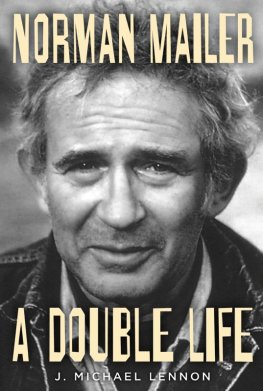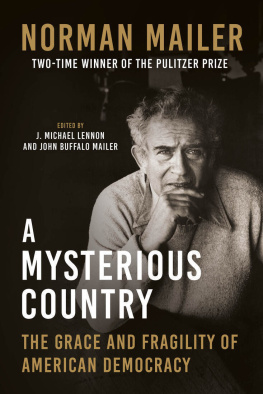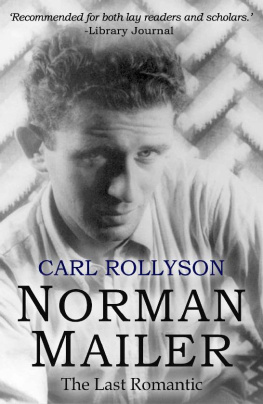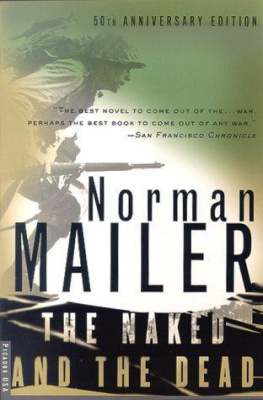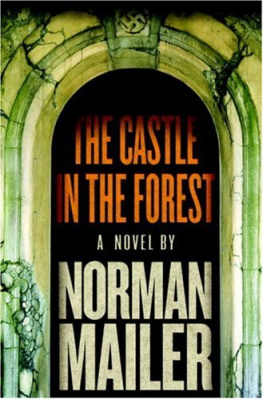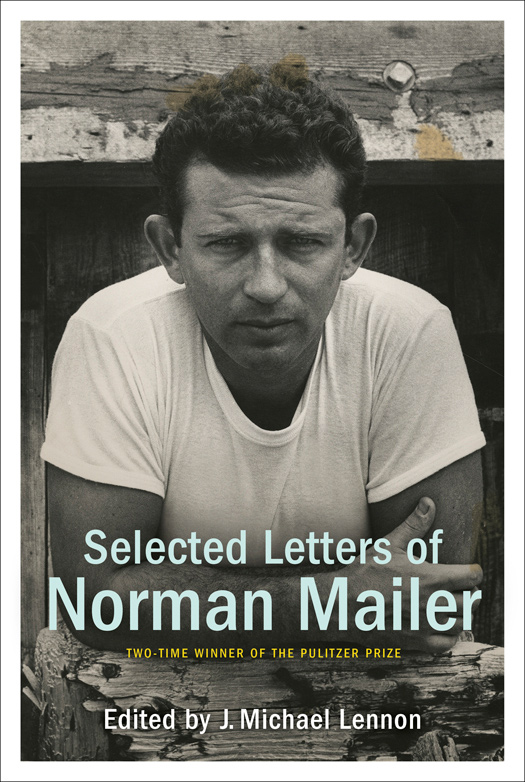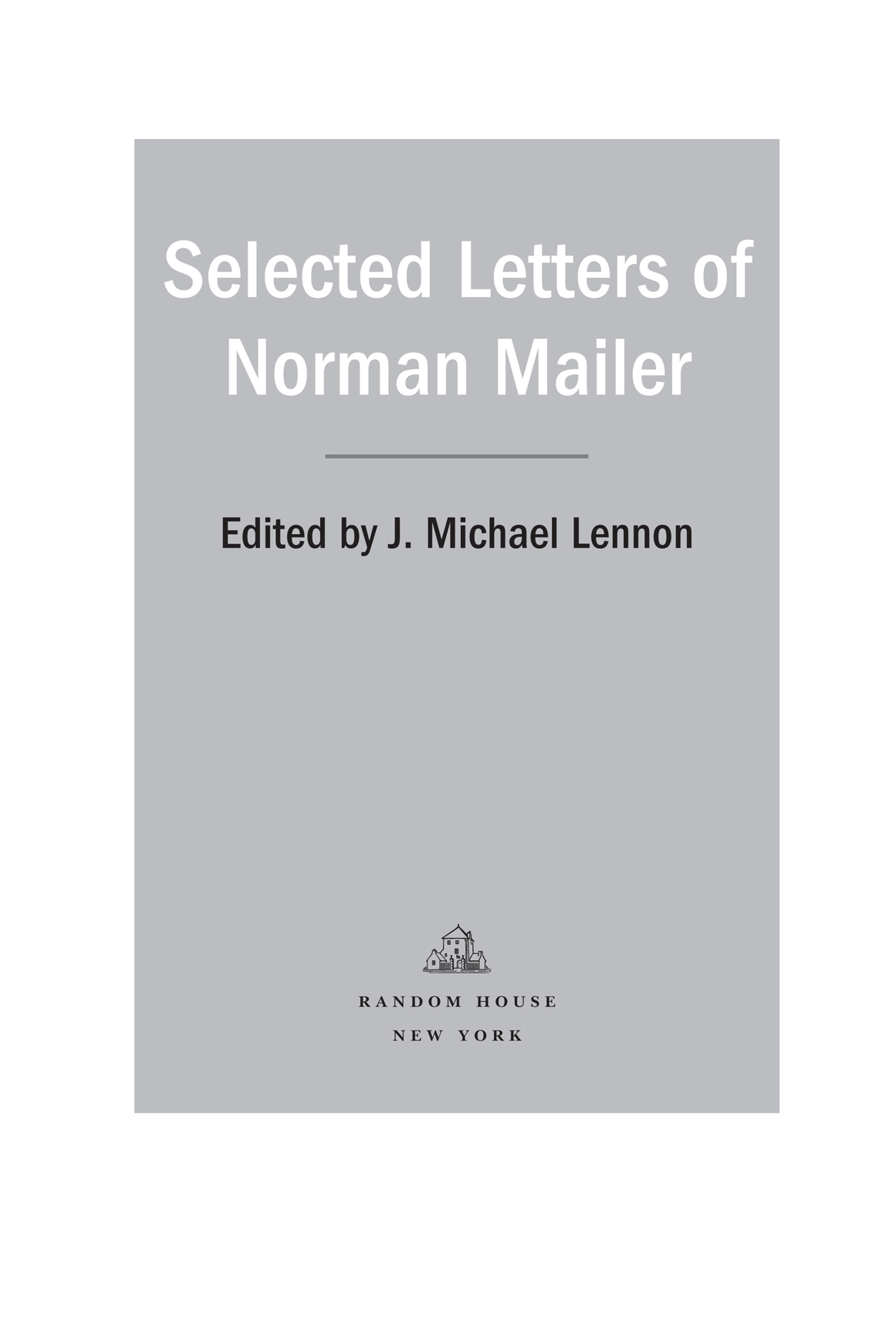Copyright 2014 by the Estate of Norman Mailer
Introduction copyright 2014 by J. Michael Lennon
All rights reserved.
Published in the United States by Random House, an imprint and division of Random House LLC, a Penguin Random House Company, New York.
R ANDOM H OUSE and the H OUSE colophon are registered trademarks of Random House LLC.
Excerpt from The Prizefighter and the Author from New York Post, September 17, 1962 1962 by New York Post. All rights reserved. Used by permission and protected by the Copyright Laws of the United States. The printing, copying, redistribution, or retransmission of this Content without express written permission is prohibited.
PHOTO CREDITS : , Norris Church Mailer
Library of Congress Cataloging-in-Publication Data
Mailer, Norman.
[Correspondence. Selections]
Selected letters of Norman Mailer / edited by J. Michael Lennon.
pages cm
Includes bibliographical references.
ISBN 978-1-4000-6623-0
eBook ISBN 978-0-8129-8609-9
1. Mailer, NormanCorrespondence. I. Lennon, Michael, editor. II. Title.
PS3525.A4152Z48 2014
813.54dc23
2014010157
www.atrandom.com
First Edition
Book design by Jo Anne Metsch
v3.1
For Nancy A. Potter, with me from the start,
with gratitude and love
EDITORS NOTE


A SUMMARY OF the key events and activities in Mailers life is given in the introductory text for each decades letters, from the 1940s through the 2000s. Notes for the letters, with matching numbers and boldfaced phrases for identification, are found after the last letter. Mailers books and a few others, plus a few names, are abbreviated in the Notes, where a list of these shortened forms has been provided. Each letter is dated; if the date is in brackets, it has been estimated or otherwise determined. The place of composition is given for each new location and also at the beginning of each decade. Grammar and spelling errors, unless instructive, have been silently corrected; a few necessary missing words have been added in brackets. Mailer wrote his letters in big batches and often repeated himself. These repetitions, and much inconsequential informationdriving directions, the latchkeys location under the doormat, and so forthhave been cut and are indicated by bracketed ellipses. The format of the letters has been regularized. The Select Bibliography consists of Mailers first editions and selected memoirs, novels, and critical studies by others.
INTRODUCTION
J. M ICHAEL L ENNON
IN A LITTLE-KNOWN , never-reprinted 1981 essay, A Sinister Occupation, Mailer wrote, I am still getting up my nerve at the age of fifty-seven to take a deep breath and tell the only personal story that any of us ever have, the true story of my own life and its curious turns, and all its private parts, yes, to look into the mirror and begin to write. Mailer never wrote his autobiography, although he did write several nonfiction books laced with self-reflection and revelation, beginning with his 1959 classic, Advertisements for Myself. Looking backward, he concluded, would effectively end his career as a novelist, biographer, and chronicler of American life; a thoroughgoing autobiography would be his tombstone. In recompense, he left us an extraordinary trove of letters, one of the largest in American life, and comprising as complete a life recordin his own wordsas we will ever have: at least forty-five thousand letters. For comparisons sake, Willa Cather wrote twenty-eight hundred, Hemingway perhaps ten thousand, Elizabeth Bishop several thousand, and Mark Twain about twenty-three thousand. Mailers outgoing correspondence contains twenty to twenty-five million words.
This massive outpouring notwithstanding, Mailer never looked forward to letter-writing day. He grumbled at the beginning of innumerable letters about the chore and regularly conjured metaphors for his aversion to the epistolary art, noting, for example, that the thought of answering fifty to a hundred correspondents, after a day of novel writing, made him feel like a marathoner going around the course a second time. I bear the same relation to letter writing, he wrote to a friend, that a farmer does to flooded fieldsI keep trying not to look at them. He told another correspondent that sometimes he waited a month or more before tackling the pile of incoming mail, and then I am like an Alaskan pioneer shoveling his way from the door to the barn after two months of blizzards. Invariably, however, he warmed to the task. In letters begun in dutiful gloom, he produced some of his most memorable prose.
Until 1958, Mailer typed his own letters, almost always keeping a carbon. Later, he dictated his letters, as he explained in a 1989 letter to his eight-year-old granddaughter, Valentina:
I am typing this letter so it will be easier for you to read. Actually, what I do is talk to you and have a tape recorder take down all my words. Then my assistant, whos a nice lady named Judith McNally, listens to the tape recorder and types out the message. Then I sign it. Its a long way to write one letter, but it helps when you have fifty to answer. Your mom will explain that.
The Mailer Archive at the Harry Ransom Center of the University of Texas at Austin contains over thirteen hundred cassette tapes of Mailers dictation, each containing scores of letters. Listening to his recorded words, one gets a vivid sense of a meticulous stylist seeking the precise cadence for each sentence. Unless the letter is purely perfunctory, and occasionally even then, Mailers method was to mutter a sentence or two of his reply and then utter it again, clearly and perhaps improved, always listening for the beat. If something struck him as particularly felicitous, he would slap the table once or twice with satisfaction. Later, when his secretary gave him the letters for signature, he might make a further improvement, and/or add a postscript. This was his routine for fifty years. The care he gave, and the number of magnificent letters he wrote, belie his griping about the task.
While many of his letters are notes to individuals who were seeking information or an autograph, or answers to invitations to speak or write and other business matters, many others, a plurality if not a majority, are either intrinsically interesting or enrich our knowledge of his personal and public lives, and of the ways they overlapped. Especially from the mid-sixties on, when his career went into overdrive, the letters are crammed with the particulars of a frenetic, full-throttle literary life. We learn of the slogs on some books


